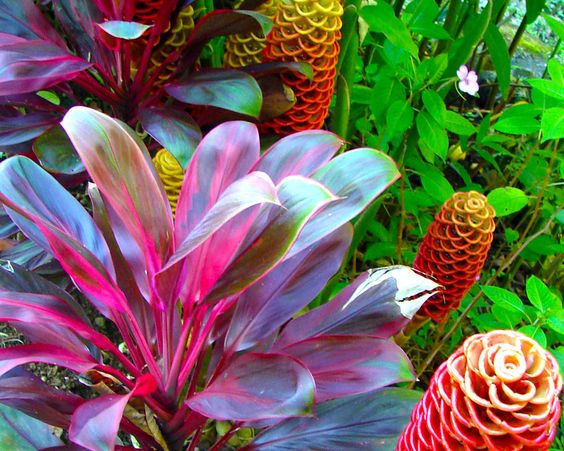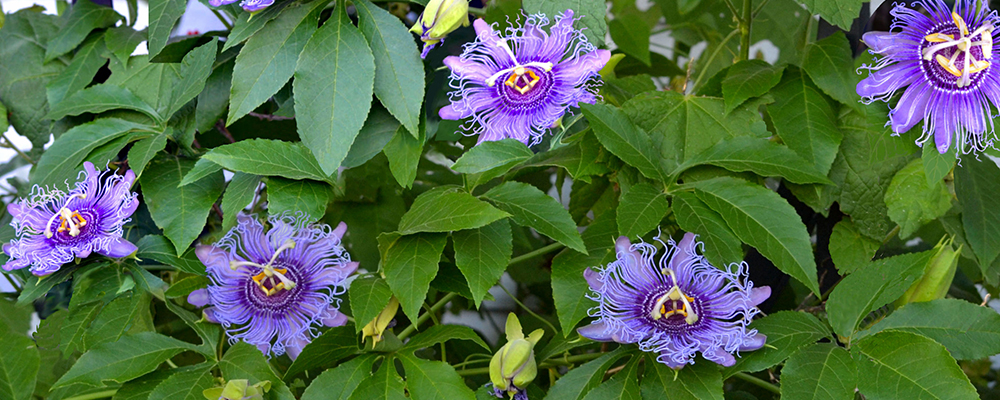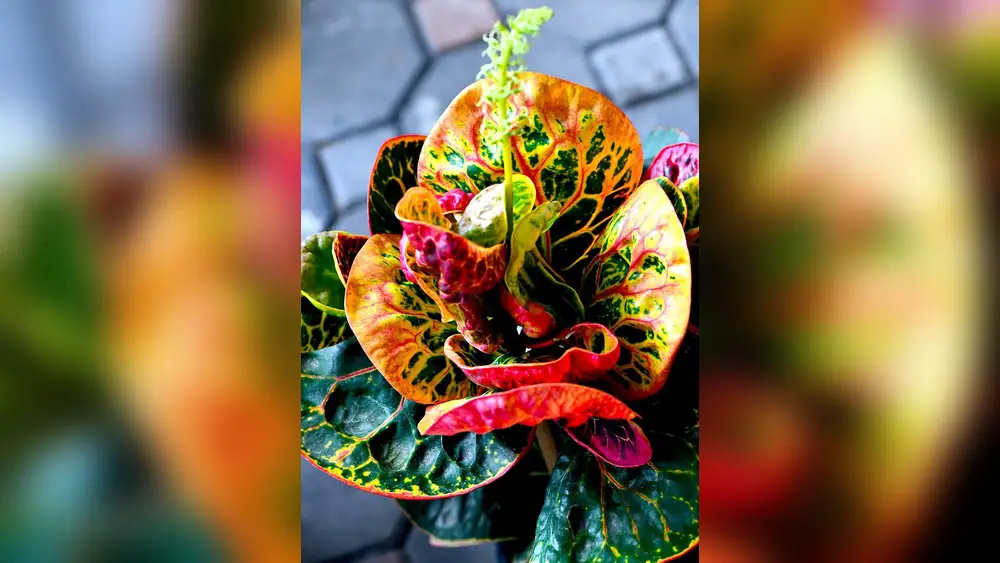If you live in Central Florida and want a garden that thrives with less effort, choosing the right plants is key. You might wonder which plants can handle the hot sun, occasional drought, and humid days without constant care.
Imagine stepping outside to vibrant colors and buzzing pollinators, all from plants that suit your local climate perfectly. In this guide, you’ll discover the best plants for Central Florida that bring beauty, resilience, and ease to your yard. Whether you want bright flowers, drought-tolerant greenery, or native species that support wildlife, you’ll find the perfect options to make your garden flourish year-round.
Keep reading to transform your outdoor space into a stunning, low-maintenance paradise.
Top Flowers For Florida Gardens
Florida gardens thrive with flowers that handle heat and humidity well. Choosing the right blooms brings color and life all year. The top flowers for Florida gardens offer beauty and ease. These plants suit Central Florida’s unique climate perfectly.
Pentas For Vibrant Blooms
Pentas are a favorite for their bright, star-shaped flowers. They bloom in red, pink, lavender, and white shades. These plants attract butterflies and hummingbirds, adding movement to your garden. Pentas need little care and handle Florida’s heat with ease.
Blue Daze Groundcover
Blue Daze is a low-growing plant with true-blue flowers. It works well as groundcover in sunny spots. This plant spreads quickly, covering ground with a soft blue carpet. It thrives in Central Florida and requires minimal watering once established.
Coreopsis And Gerbera
Coreopsis, or tickseed, offers bright yellow flowers with fine foliage. This perennial blooms from spring through fall. Gerbera daisies bring large, colorful blooms in various shades. Both plants enjoy full sun and well-drained soil, making them perfect for Florida gardens.
Bolivian Sunset Gloxinia
Bolivian Sunset Gloxinia is known for its striking, trumpet-shaped flowers. It produces vibrant red, orange, and yellow blooms. This tropical plant prefers partial shade and moist soil. It adds a splash of bold color to shaded garden areas.
Blue Salvia And Lavender
Blue Salvia offers spikes of deep blue flowers that attract pollinators. It is drought-tolerant and loves full sun. Lavender adds fragrance and soft purple blooms. Both plants bring texture and color variety to Florida gardens. They thrive with little fuss and provide lasting beauty.
Low-maintenance Landscape Ideas
Creating a beautiful garden in Central Florida does not require constant work. Low-maintenance landscape ideas focus on plants and designs that save time and water. These ideas fit well with the Florida climate and soil. They help keep your garden healthy without much effort.
Rain Gardens For Water Control
Rain gardens catch rainwater and reduce flooding. They use native plants that absorb excess water. These gardens improve soil health and prevent erosion. Rain gardens need little care once they are established. They also create habitats for local wildlife.
Native Plants For Easy Care
Native plants thrive in Central Florida’s climate naturally. They need less water and fertilizer than exotic plants. These plants resist pests and diseases better. Choosing natives means less pruning and trimming. Your garden stays green and healthy with simple care.
Goldenrod And Swamp Sunflower
Goldenrod brightens the garden with yellow blooms. It attracts pollinators like bees and butterflies. Swamp sunflower grows well in wet areas and dry spots. Both plants need little watering after they start growing. They add color and life to any landscape.
Muhly Grass And Milkweed
Muhly grass shows off pinkish-purple plumes in fall. It requires minimal water and trims easily. Milkweed supports monarch butterflies and other insects. It is tough and grows well in poor soil. These plants add texture and support wildlife in your garden.
Hardy And Easy-to-grow Plants
Hardy and easy-to-grow plants thrive in Central Florida’s warm climate. These plants need less care and survive heat and occasional dry spells. They suit gardeners who want beautiful greenery without much work. Choosing resilient plants helps maintain a vibrant garden all year.
Pineapple Plant Resilience
The pineapple plant grows well in Central Florida’s heat. It needs little water and can handle dry conditions. This plant also resists pests and diseases. It produces attractive spiky leaves and, sometimes, fruit. Pineapple plants add a tropical feel to any garden.
Heat-tolerant Perennials
Heat-tolerant perennials bloom year after year with little fuss. They survive high temperatures and occasional droughts. These plants provide steady color and structure to gardens. Examples include Pentas, Hibiscus, and Yarrow. They attract butterflies and bees, supporting local wildlife.
Firebush And Plumbago
Firebush and Plumbago are popular Central Florida choices. Firebush has bright red-orange flowers that attract hummingbirds. Plumbago offers soft blue flowers and grows quickly. Both plants tolerate heat and poor soil. They add vibrant color and texture to landscapes.

Credit: landartla.com
Perennials For Continuous Color
Perennials offer a dependable way to keep your Central Florida garden colorful throughout the year. These plants return season after season, providing vibrant blooms with little effort. Choosing the right perennials ensures your garden never looks dull or empty.
Many perennials thrive in Central Florida’s warm climate and are resistant to heat and humidity. They attract pollinators like bees and butterflies, which help your garden flourish. Below are some top choices that bring continuous color and life to your yard.
Year-round Hibiscus
Hibiscus plants produce large, bright flowers almost all year in Central Florida. Their blooms come in red, pink, yellow, and white shades. Hibiscus thrives in full sun and well-drained soil. These tropical-looking plants add bold color and attract hummingbirds. They need regular watering but are otherwise low-maintenance.
Stokes Asters For Pollinators
Stokes asters create beautiful clusters of white and lavender-blue flowers. They bloom from spring through fall, providing long-lasting color. These perennials attract butterflies and bees, boosting your garden’s health. Stokes asters prefer full sun and can tolerate dry spells once established. Their dense growth also helps control soil erosion.
Colorful Pentas
Pentas produce star-shaped flowers in red, pink, lavender, or white. These plants bloom continuously, offering nonstop color from spring to frost. Pentas thrive in sunny spots and warm conditions. They are drought-tolerant and require minimal care. Pollinators love pentas, making them a great choice for a lively garden.
Drought-tolerant Plant Choices
Central Florida’s climate can be harsh, especially during dry spells. Choosing drought-tolerant plants helps your garden stay green and healthy with less water. These plants survive dry conditions and reduce the need for frequent watering. They are perfect for busy gardeners and eco-friendly landscaping.
Here are some of the best drought-tolerant plants that thrive in Central Florida’s heat and dryness.
Yarrow’s Toughness
Yarrow is a hardy plant that withstands drought well. Its feathery leaves and flat clusters of flowers add texture and color. Yarrow attracts butterflies and bees, making it great for pollinator gardens. It grows well in poor soil and needs little care. Once established, it rarely needs extra water.
Rock Rose For Borders
Rock Rose is a low-growing shrub ideal for garden borders. It produces bright, rose-like flowers that bloom in warm weather. This plant tolerates dry soil and full sun without wilting. Rock Rose creates a neat edge and adds vibrant color. It requires minimal watering once it settles in.
Low Maintenance Firebush
Firebush is a tough shrub with bright red or orange flowers. It thrives in heat and tolerates drought conditions. Firebush attracts hummingbirds and butterflies, adding life to your garden. It grows well in poor soil and needs little care. This plant stays healthy with minimal water and attention.
Plants That Attract Pollinators
Pollinators like bees, butterflies, and hummingbirds play a key role in any garden. They help plants grow by moving pollen from flower to flower. Choosing plants that attract pollinators is a smart way to support local wildlife. Central Florida’s warm climate allows many such plants to thrive. These plants provide nectar and pollen that feed pollinators throughout the year. They also add beauty and color to your garden.
Milkweed For Butterflies
Milkweed is vital for many butterfly species, especially monarchs. It provides a place for monarchs to lay their eggs. The caterpillars feed only on milkweed leaves. The flowers produce nectar that attracts many pollinators. Milkweed grows well in Central Florida’s climate. It requires little water once established and prefers full sun. Planting milkweed helps protect declining butterfly populations. It also adds lovely clusters of pink, orange, or white flowers to your garden.
Stokes Asters’ Native Appeal
Stokes asters are native wildflowers that attract bees and butterflies. Their daisy-like flowers bloom from spring through fall. The colors range from white to lavender-blue. These asters grow well in Florida’s sandy soils. They tolerate heat and drought, making them easy to care for. Stokes asters add a natural, wild touch to any garden. Their long blooming period provides food for pollinators over many months.
Native And Florida-friendly Picks
Native and Florida-friendly plants are ideal for gardens in Central Florida. They adapt well to local weather and soil. These plants need less water and care. They help keep your garden healthy and vibrant all year.
Benefits Of Native Plants
Native plants save water and reduce the need for chemicals. They grow strong in Central Florida’s climate. These plants attract butterflies, birds, and bees. This supports pollination and a lively garden. Native plants also prevent soil erosion and improve air quality.
Supporting Local Ecosystems
Plants native to Florida create homes for wildlife. Birds build nests and find food among native shrubs. Insects like bees and butterflies depend on native flowers for nectar. Supporting local ecosystems means protecting natural habitats. It also helps maintain the balance of nature in your area.
Rain Garden Plant Selection
Rain gardens use plants that soak up extra water. Choose species like goldenrod, swamp sunflower, and muhly grass. These plants thrive in wet conditions and filter rainwater. Milkweed is another excellent choice for rain gardens. It supports pollinators and manages stormwater effectively.

Credit: www.showcaseocala.com
Sunlight And Regional Tips
Understanding sunlight needs and regional differences is key for growing healthy plants in Central Florida. This region has a warm climate with plenty of sunshine. But not all plants handle sun and heat the same way. Choosing the right plants for your garden’s light and local conditions helps them thrive and stay vibrant. Here are some tips on matching plants to sunlight and adapting to the area’s unique climate.
Choosing Plants By Light
Central Florida gardens often have areas of full sun, partial shade, and deep shade. Full sun means six or more hours of direct sunlight daily. Many native plants like Pentas and Hibiscus love full sun. They bloom bright and strong under strong light.
Partial shade means about three to six hours of sun. Plants such as Heuchera and Blue Salvia do well here. They enjoy some sun but need protection from the hottest afternoon rays.
Deep shade has less than three hours of direct sun. Ferns and some native groundcovers grow best in this cooler, darker space. Picking plants suited to your garden’s light levels reduces stress and watering needs.
Adapting To Regional Differences
Central Florida’s climate varies from coastal areas to inland zones. Coastal gardens face salty air and sandy soil. Salt-tolerant plants like Sea Oats and Muhly Grass thrive near the coast. Inland gardens have richer soil but can get hotter in summer.
Adjust watering based on soil type and sun exposure. Sandy soil drains fast and needs more frequent watering. Clay holds water but may cause root rot if overwatered. Observe your plants and adjust care to fit your spot’s microclimate.
Choosing native plants suited for Central Florida’s conditions ensures they survive droughts, heat, and occasional cold snaps. Native plants support local wildlife and require less fertilizer and pesticides.

Credit: plantologyusa.com
Frequently Asked Questions
What Are The Best Plants For Central Florida?
Best plants for Central Florida include Pentas, Hibiscus, Stokes Asters, Firebush, Plumbago, Yarrow, Milkweed, and Blue Salvia. These heat-tolerant, low-maintenance plants thrive in local conditions and attract pollinators. Choose native species for easy care and vibrant, year-round blooms.
What Is The Best Low-maintenance Landscape In Florida?
The best low-maintenance landscape in Florida features native plants like goldenrod, swamp sunflower, muhly grass, and milkweed. Rain gardens with these plants control water naturally and thrive with minimal care. Choose drought-tolerant, Florida-friendly species to ensure year-round beauty and easy upkeep.
What Is The Easiest Plant To Grow In Florida?
The easiest plant to grow in Florida is the pineapple plant. It thrives with minimal water and no frost exposure. Pineapples handle heat well and require little care, making them ideal for Florida gardens.
What Is The Best Perennial Plant In Florida?
The best perennial plants in Florida include Pentas, Hibiscus, Stokes Asters, Firebush, Plumbago, Yarrow, and native Milkweed. These heat-tolerant, low-maintenance plants thrive in Florida’s climate and attract pollinators, ensuring vibrant, year-round color with minimal care. Choose native species for best results.
Conclusion
Choosing the right plants helps your garden thrive in Central Florida’s climate. Native and heat-tolerant plants need less water and care. Flowers like pentas and hibiscus bring color all year. Drought-resistant options like yarrow save water and stay healthy. These plants support local wildlife and make your garden lively.
Simple choices create a beautiful, low-maintenance yard you can enjoy daily. Start planting today and watch your garden grow strong and bright.

